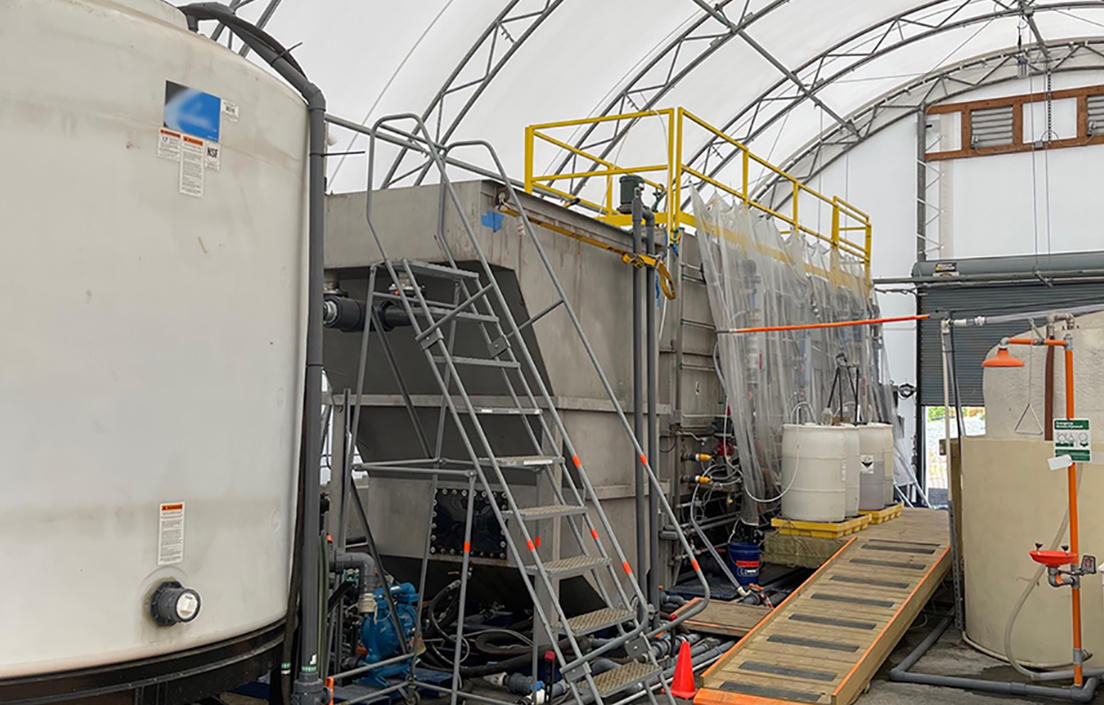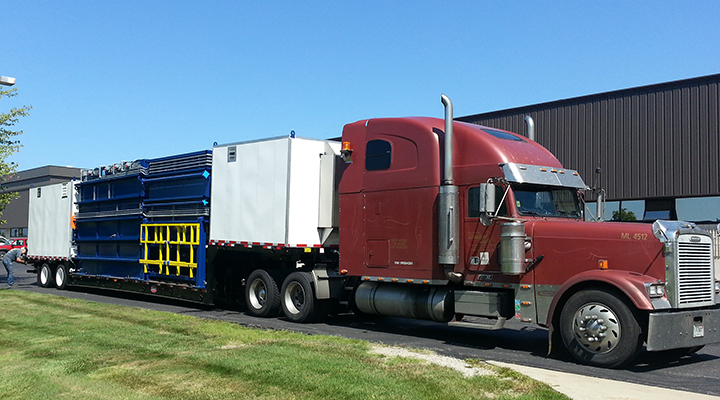Background
Chromium is a naturally occurring element found in rocks, animals, plants, and soil. Chromium has several different forms. The most common forms are chromium metal (or chromium (0)), trivalent (or chromium (Ill)), and hexavalent (or chromium (VI)). Chromium (0) and chromium (VI) are generally produced by industrial processes. At low doses, chromium (lll) is an essential nutrient for the human body to promote the action of insulin in body tissue, so sugar, protein, and fat can be used by the body [1].
Exposure to chromium (VI) and higher doses of chromium (III) have well-documented adverse health effects. In general, chromium (VI) is as much as 1,000 times more toxic than chromium (Ill) and is classified as a carcinogen. The OSHA permissible exposure level (PEL) for chromium (VI) is 5 ug/m3 as an 8-hour TWA [2]. The EPA’s drinking water standard is 0.1 mg/L (l00 ppb) for total chromium, which includes chromium (III) and chromium (VI) [3].
Solution
An effective treatment method for chromium (VI) contaminated groundwater is to reduce the chromium (VI), precipitate the new chromium (III) form, and use a flash floc method to capture and filter out the chromium particulates. At a former chromium manufacturing plant site in Jersey City, New Jersey, Evoqua and its subsidiaries have used this treatment method since mobilization in late 2011. A 4-chamber chemical mixing tank, an inclined plate clarifier, sand filters, bag filters, carbon, and clay media, have consistently removed chromium (VI) with no discharge violations.
In the first chamber, the raw chromium (VI) water is blended with a reducing agent. The reducing agent transfers electrons to chromium (VI), reducing it to the less toxic chromium (III). Acid is added to act as a catalyst, making the reduction happen faster than it would at a higher pH. Oxidation -reduction potential (ORP) is monitored throughout this reaction. A lower ORP signals that reduction has occurred.
In the second gravity-fed chamber, a pH change initiates precipitation of the chromium (III). A caustic is fed automatically to drive the pH to an optimum set point. An aluminum-based coagulant and flocculent are injected in chambers 3 and 4, respectively. With mounted mixers, recirculation pumps, static mixers, and enough residence time, the polymers attract and attach to the chromium particles before the treated water leaves the 4-chamber chemical mixing tank. The additional weight and size allow removal of the particulates through the next phase of settling and filtration.
Results
An inclined plate clarifier removes the heavier particulates. Sand and bag filters remove the remaining particulates down to the desired size. A final polishing by granular activated carbon (GAC) and zeolite media adsorb any remaining organics or trace metals from the water.
The concentrated chromium (III) sludge collected in the hopper bottom of the inclined plate clarifier can be pumped to a sludge thickening tank and then dewatered using an automated machine like a rotary vacuum drum, also known as an autovac. A vacuum pulls the liquid out of the sludge through a filter media before an advancing knife blade separates the dried sludge cake from the filter media. The concentrated chromium (III) sludge may need to be hauled offsite as a hazardous waste, due to possible elevated total chromium levels. However, the same amount of chromium (VI) sludge would pose a much higher health risk to any personnel that may contact or inhale the dust particles.
Safety is a major concern at a site like this, which is why Evoqua, as a team, continually evaluates the site conditions and uses their engineering and administrative controls to protect the onsite employees. Examples of such improvements include exhaust fans and blower control ventilation systems, strict enforcement of PPE use, high hazard work authorizations by the site superintendent, proper labeling of hazardous materials, daily tailgate safety meetings, and medical monitoring.
[1], [2]: https://www.osha.gov/laws-regs/regulations/standardnumber/1910/1910.1026
[3]: https://www.epa.gov/sdwa/chromium-drinking-water#:~:text=EPA%20has%20a%20drinking%20water%20standard%20of%200.1,systems%20are%20required%20to%20test%20for%20total%20chromium.



